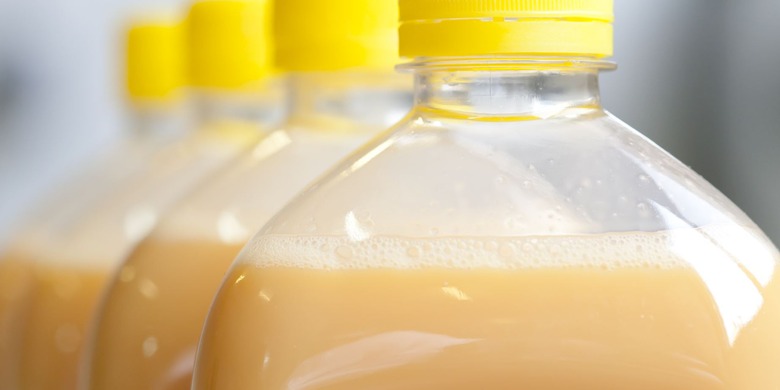How Are Egg Beaters Pasteurized Without Being Cooked?
Pasteurized liquid egg products (the ones that look like they're in little milk cartons, sold next to the regular eggs) are a quick and convenient way to get your egg fix without having to crack or mix anything They're also a safe way to make cookie or brownie batter that you plan on eating some of raw. (Some supermarkets also sell eggs that have been pasteurized in the shell; these are marked with a red "P.") Lots of foodservice companies use these liquid eggs when they're making a whole lot of scrambled eggs or omelettes in bulk, and pasteurized egg whites are super-handy when you don't feel like separating eggs. But here's a question for you: If the definition of pasteurization is "to expose to an elevated temperature for a period of time sufficient to destroy certain microorganisms," how can this be done without cooking the eggs?
The answer is actually pretty simple: The eggs are heated, but not to the point where they start to cook. Eggs cook at about 145 degrees, but the temperature required to kill off Salmonella and other bacteria is only about 130 degrees. During pasteurization, the eggs are never brought above 140 degrees, and they're held at the ideal temperature for up to 75 minutes, long enough to make sure that all the pathogens are killed.
If you're going to be making mayonnaise or another food that requires raw eggs at home but are squeamish about the salmonella risk, you can actually pasteurize in-shell eggs yourself provided that you have an immersion circulator; just hold the eggs at 135 degrees for 75 minutes. The only real difference between pasteurized eggs and regular eggs from a culinary standpoint is the fact that pasteurized egg whites can take up to four times as long to get frothy. For 19 more interesting facts about eggs, click here.
